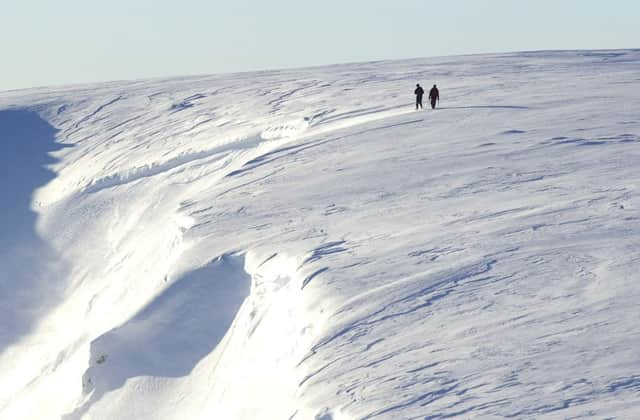Experts to highlight Scotland’s avalanche danger


The Snow and Avalanche Foundation of Scotland is bringing together specialists in avalanche information, snow sports and advertising at a two-day seminar that will explore ways of better educating people about the risks posed by unstable snow.
Avalanche information professionals from Scotland, Canada and Switzerland will give presentations at the two-day event, which kicks off in Edinburgh on Saturday.
Advertisement
Hide AdAdvertisement
Hide AdTopics to be discussed include the pioneering Be Avalanche Aware initiative, which has been operated by the Sportscotland Avalanche Information Service (SAIS) since 2013.
Those attending will look at how people use the information and how it might be developed.
Scientists will also give insights into how layers of snow, known as snow packs, create the potential for snow slides.
The move comes after two men came under fire for visiting the scene of an avalanche earlier this year while unsuitably dressed for the conditions.
“A range of presentations from a variety of experts, including a creative director in advertising and behavioural research information from the Met Office, will enable us to explore why and who engages with adventure activities and how we behave and take on messages,” said SAIS’s Mark Diggins.
“Presentations by avalanche specialists from Canada, Switzerland and Scotland will illustrate not only the various snow packs and how they differ but also what approaches are used to inform the public about hazard and what may be the best approach for educating and getting important messages across.”
Avalanches are measured on an international scale of one to five. Size five slides are big enough to destroy a village or large forest.
During the winter of 2013 to 2014, 350 were documented during one of the snowiest seasons in Scotland’s mountains in nearly 70 years.
Advertisement
Hide AdAdvertisement
Hide AdIn 2013, the most recent full year for which statistics are available, eight people died as a result of avalanches.
Four of those killed were caught up in a massive snowfall on Bidean Nam Bian in Glencoe. The SAIS had categorised the avalanche risk around the area as “considerable” – the second lowest on a European four-point scale.
Another notorious avalanche, on the well-known Glencoe landmark Buachaille Etive Mòr in January 2009, claimed the lives of three climbers in an incident described at the time as “one of the worst disasters in the Scottish mountains for decades”.
More recently, an experienced British climber died after an avalanche in the northwest Highlands in February. The man’s death, which occurred after he was hit by loose snow in the well-known climbing mecca Liathach, near Torridon, was the first avalanche fatality in the Scottish mountains in two years.
Two men were criticised earlier this year after stopping to look at debris from an avalanche on Creag Meagaidh while there was a potential risk of a further snow slip. One was one was dressed in shorts and deck shoes and the other in jeans.
A slide big enough to bury a car was recorded on the same Munro in February.
SAIS provides avalanche hazard information reports for walkers, mountaineers, snowboarders and skiers heading for hills in the Cairngorms, Glencoe, Lochaber and Torridon between December and April.
Mr Diggins added: “We consider that the discussions and presentations on avalanche hazard could also be applied to winter environments outside of Scotland, and knowing how people react and behave in benign and hazardous environments will be very interesting and may provide us with an opportunity to look anew at how we educate and inform in general.”